How to Increase the Profitability and Productivity of Your Business while keeping Overhead Costs Low! – with Louis Spagnuolo
Last Updated on June 27, 2014 by Owen McGab Enaohwo
In this interview Louis Spagnuolo the CEO of Don’t Look Media LLC reveals a system you can use to Increase the Profitability and Productivity of Your Business while keeping Overhead Costs Low!
Podcast (podcast-audio): Play in new window | Download
Tweetable Quote:
Keep systems in your business simple, don’t try to reinvent the wheel, use what’s already been established to work. http://t.co/PXNlkg1YnE
— SweetProcess (@SweetProcess) June 27, 2014
In this Episode You will Discover:
- Why Louis believes in building a team that is moving in the same direction.
- How Louis uses a five-point system to organize priorities and encourage productivity.
- The framework Louis uses to create custom-made solutions for his customers.
- How Louis utilizes a proprietary project management system to monitor and analyze the progress of projects.
- Why Louis believes in building simple systems.
- How Louis was able to decrease overhead and increase the production of his team.
- Why Louis believes in identifying bottlenecks and putting systems in place to streamline processes.
Noteworthy items Mentioned in this Episode:
- TIGER 21 for advice and ideas
Episode Transcript:
OWEN: My guest today is Louis Spagnuolo and he is the CEO of Don’t Look Media LLC. Louis, welcome to the show.
LOUIS: Thank you for having me.
OWEN: So Louis, let’s dive right in. What exactly does your company do and what big pain do you solve for your customers?
LOUIS: Basically Don’t Look Media owns and operates more than 4,000 intellectual property assets across as many as 47 different unique verticals. Those assets include domain names, technology patents, trademarks, copyrights, telephonic properties, and exclusive licensing rights to many high value intellectual properties, and essentially, what we do is we add value to companies that are providing a service or a product by integrating all intellectual property within their systems and then exponentially increase their revenue.
OWEN: Can you break that down a little bit for us because I want to understand what you mean by you add intellectual property assets to the business.
LOUIS: Basically, it’s like for example we could tell your company to sell hunting equipment for example. And what we would do is we would partner with that and we would basically license our domain name huntingequipment.com to them where they could expand their internet presence by owning the vertical mainstay so to speak for what their products are. And then we could also introduce patents, trademarks, copyrights, telephonic properties 1-800-huntingequipment or 1-800-hunting. Things like that where they don’t necessarily have exposure to. So by partnering with us they gained that exposure and they gained that brand recognition that they don’t currently have.
OWEN: Okay. So is it kind of like– because maybe you guys are great on SEO and search engine kind of stuff, you create like a lead generation type of thing for service?
LOUIS: In a sense. Basically what we’ll do is well take our company that sells a product that serves this and we’ll give them the best real estate so to speak, best virtual real estate for that vertical. And then we’ll look at ways to create competitive advantages for them through intellectual property. And then we partner with them through intellectual property. And then we partner with them, and basically help them grow.
OWEN: Okay, great. And so my listeners always want to know the scale of your business. So first all, how many full-time employees do you currently have?
LOUIS: It varies. It’s usually between 16 and say 22, just depends upon our project load.
OWEN: And what was last year’s–
LOUIS: … and how many partners we’ve taken on, and what we’re looking to do as far as growing.
OWEN: Oh great. And what was last year’s annual revenue and probably what you’re expecting to do this year.
LOUIS: Between 8 and 9 million, and I think we’re probably be slightly ahead this year as the economy seems like it’s [No audio 00:02:36] around and it seems like more companies are interested in growing, wherein the past few years companies are more worried about maintaining, and cutting cost, and laying people off and things of that nature.
OWEN: Awesome. This interview is all about looking at businesses, especially where like the CEO like yourself has established a business where it runs literally without you having to be there because you’ve systematized it. But before it got to this point I want to go back and talk about what it was like back then. So describe, what will you say was the lowest point in the business and describe how bad it got.
LOUIS: Well, it never got to the point where we’re going to go out of business and close. I think it just got to the point where we got a lot of people going in different directions, we don’t have really systems in place, and we weren’t working as efficiently as possible. And there wasn’t as many checks [No audio 00:03:26] as we have now.
OWEN: One of the things you mentioned during the pre-interview was that it was a difficult aspect of running the business, and trying to create a culture that reflected what you wanted when you had issues with poor execution of employees and also not being properly trained to your standards. Talk about that a little bit more, please.
LOUIS: Basically, we had a lot of people running in different directions that came from other companies, and had other ways of doing things and we weren’t really all on the same page. So we felt that it was critical that we have all of our employees with the same vision, same ethics, same integrity, same customer support, same dedication, all driving towards the same goal. Because at one point it seems like we’re all going in different directions trying to accomplish the same thing. Whereas now we’re all uniform, we all do things in a certain manner, we do things with a certain methodologies, and tenets, and things like that, that we’ve put in place so there’s really very little doubt what needs to be get done, what order needs to get done, and how much time we have for each project.
OWEN: Can you give me a specific example of this problem you just mentioned? How would that impact maybe was the Aha moment where something happened to you like you just have to change things around?
LOUIS: Basically we had one client where it involved maybe 8 different disciplines to integrate what we’re looking to do integrate what we’re looking to do. And we got through the first week pretty quickly, and then when it came to the 4, 5, and 6 we ran into some challenges and some hurdles but we had 8, 9, or 10 done. So we basically at the beginning part done and the end part done, but we ran into issues in the middle. And it just created a big disruption where the client was disappointed, I was disappointed, the whole team was disappointed where we felt that it should’ve gone a lot smoother, and then we realize that if we don’t have each section accountable for what they have to do in the proper order, we’re not going to be able to get the synergies and the results that we’re looking for.
OWEN: Okay. So now let’s talk about how you solve that problem that you mentioned and the lowest point. So what did you guys do to solve the problem? What was the first thing you guys did?
LOUIS: The first thing we did was we all got together cumulatively, we sat in the boardroom and we said, “Okay, let’s identify what the problems are, where the disconnects are, and then let’s put a plan in place to how to eliminate these problems with disconnects.” So we basically came up with a book so to speak of first company tenets on how we’re going to operate and interact. And then we came up with each department what their responsible for, what the timetables are, and how to interact with the next piece that goes into place. And it’s kind of like building almost like a Lego set so to speak, where if you don’t have the base done correctly you can’t really build the roof so to speak. And I think that really helped us once we identified those things, we got new systems in place to alleviate problems, and we got everybody on the same page.
OWEN: So during the pre-interview you mentioned how you broke it down to departments first of all and then I think you identify people within those departments who would be responsible for taking charge of building now the systems within the departments. And then also be responsible for passing it out to other employees that work on them. Can we talk about some other things that you do specifically [Unintelligible 00:06:44] the different departments at this time?
LOUIS: What we decided to do instead of giving each person anonymity. What we did was we’d have 1 manager and he’d be ultimately responsible for his area of getting done. And then that person would interact with the person that will handle the middle piece. And that middle piece person would handle the person that finalizes the project. So really we designated 3 leaders and then we had people working underneath them. So we had accountability at all phases of the project. So we knew exactly what was going on and exactly where we have hiccups, and exactly what the challenges where, and where we needed to add resources. So, it’s much easier identifiable by having different layers of accountability where people would oversee their section and what needed to get done.
OWEN: Okay. So let’s dive in and talk about what specific systems that you currently have in this very business that allows it to run without you?
LOUIS: Basically, the main systems that we have are pretty standard where we set an objective, we set a timetable, and until that objective is completed none of the employees are allowed to work on anything else. I’m a big believer in accomplishing one thing at a time and then moving on to the next. A lot of people feel that it’s better to multitask. I kind of disagree with that. I think you should make a checklist of your 5 most important things that you need to accomplish during the day. And you start with the first one, you check it out, you start with the second one, the third one, the fourth one, and the fifth one, and you stay much more focused and you tend to get much better results. So we instituted that plan with all our employees, and we basically call it the 5-point system. And each one comes to work each day, they write down what needs to get done so we never had issues where there’s a hiccup of something major, if someone was spending time on something less relevant.
OWEN: Okay, so let’s talk about that 5-step system you just mentioned. Break it down and give us more specifics on it.
LOUIS: Basically, each employee will come to work and write down what the 5 main priorities are for the day in order of importance. So number 1 would be the most critical thing that needs to get done. So they’ll make sure that they spend all their time in the morning or even if takes the whole day to get that one thing done before they move on to number 2, number 3, number 4, and number 5. Because before that you have employees that have 5 objectives, they’ve been working on all 5 at the same time and none of them would be completely done. And it created a big problem. And I told my employees it’s better to get 4 things 100% done than 5 things 80% done. And that’s kind of the new program that we instill and we found much better results from that.
OWEN: And where are they getting this list of 5 things that they have to do. Are they just making them up as they go, where is this coming from?
LOUIS: Self-determined, and then the person that oversees that division will review them each morning to make sure everybody’s on-track so there’s no hiccups. And that’s how we have the checks and balances.
OWEN: Okay. And so, one of the things that my listeners like to talk about specifically is they like to listen to how– imagine your business like being a conveyor belt. On point is a customer now who– potential customer that has interest in the service that you provide. And on the other end that very customer has been transformed into raving fan. But behind the scenes there are a bunch of things that are happening to make that happen, right, to transform that person. So let’s talk about different parts of your business and how it affects to make sure that, that transformation happens.
LOUIS: Really, it comes down to results, and we basically, very carefully who we partner with and do business with. Because if we feel that we can’t help them exponentially then it’s not a good fit for us because we’re not interested in unhappy clients, and we’re not interested in having a ton of clients. We rather have very satisfied clients that we added material value to that could see that in form of maybe revenue, or profits, or customer acquisition. So then they could say, “Hey, you know what this was a great relationship, we want to keep building with them when we’d take on new ventures, and new products, and expand our business.
OWEN: Okay. So I need to know about the parts there, the different parts of the business.
LOUIS: [Unintelligible 00:10:50]
OWEN: You have a customer, right? A potential person who’s interested in your service who you’re transforming into– yeah, I get all you say but I want to understand the different parts that make that happen. Because that transformation didn’t just happen by happenstance. There is a series of processes that happen behind the scenes to make that transformation happen. And that’s what we’re trying to dive behind the scene and understand.
LOUIS: Well, each situation is unique, it just depends on what the client’s requirements are. So first we identify what the requirements are and then we put a plan in place in how to integrate intellectual property to help them do that. So first is diagnosing what the situation is. Then coming up with a plan of execution, third following up with that plan, and then fourth interacting with that client to make sure they’re getting the results that they need is how we typically do it.
OWEN: Okay, so is it safe to say that every customer you have now is a whole different series of steps to execute for every customer is never going to be the same?
LOUIS: Exactly. It’s never really the same. Some customers need telephonic assets, some customers need licensing assets, some customers need patents, it just really depends upon what they’re trying to accomplish, what they’re trying to gain, what their budget is, how committed are they growing a certain space of their business. So then once we analyze and diagnose all that, then we know what pieces to put in place and what we need to do. So we don’t really have a generic formula, it’s more of a specific formula. Almost as if a patient went to a doctor, there’s not always one cure for whatever the person’s illness is. It’s really about a diagnosis, finding out where the challenges are, where the areas are, and then giving them the proper medication and the proper procedures done to get them where they need to go.
OWEN: Okay. So one of the things that we keep hearing over and over again from the interviews that we do is that most of the time the guest, they always have a series of steps that are always predictable that happen in order for them to deliver the results to their customer. Meaning that it’s the same series of steps all systematized. But what you say now to me is that every customer gets the different product and also on top of that a different series of actions when you guys part. And I’m beginning to wonder, how is that now systematized? How do you systematize such a situation where each customer is going to get something totally different?
LOUIS: Well, the system is first you have to diagnose. That’s the first part of the system. The second part is we have to analyze what assets are going to add the most value to what they’re doing. The third part of the system is, okay, how do we now integrate and execute upon adding those. And then the 4th part of the system is one of the results that the client’s seeing and what modifications do we have to make. So those are the 4 principles as far as the system goes and it’s just varies per client on what actual little pieces of intellectual property that they’re needing to bring them to the level they want to go.
OWEN: Okay. So it’s more of like a framework that guides people along the line but then it just keep going back to that framework and based on the specific customer, having a feel for what needs to get done based on this framework we’re already using, right?
LOUIS: Exactly, yeah. Because I don’t think business is generic enough where we can decide one model for every case. I think business is fluid. And I think you have company that understands the fluidity of business. And to do that you have to go into each situation knowing each customer has different demands, different budgets, different expectations. And until you analyze all that and piece it together, and put it in your process, you’re not going to really know what the true solution is for them.
OWEN: Okay, so I get the framework. Is there an example that you can share for a specific customer? And maybe even talk about the specific problem they have and then how you apply the framework that you just mentioned, the 4-step framework all the way to the end for that very customer.
LOUIS: Yeah. A lot of times we’ll get customers that’ll say, “Listen, we have a great business, we have a great product, a great service. We just don’t have a presence online where our online business is doing as well as our offline business.” So for example the customer could be a tax attorney, and we could say we could say, “Okay, we can develop taxattorney.com which would be the premier piece of intellectual property within that vertical.” We would build it out, we would develop it, we would generate leads, we would then feed you the leads, we will integrate a telephonic phone number that everyone could be remember so it’d be easy. We can add some licensing deals with partnerships where we can help you. We could basically analyze the whole thing and put it together, just depending upon the client. So it could be anything from the legal space, to retail space, you name it. The insurance vertical space, there’s a million niches that we work in for clients that are looking for specific pieces of insurance that they want to bind and provide the clients. So it just all depends upon what the client’s goals are, and we adapt to those goals.
OWEN: Okay. So what challenges did you experience as you initially tried to create the systems for the business and how did you solve them?
LOUIS: Really the big challenges, like I said initially is we had basically all our employees go on in different directions at one time and not everybody was really in-tuned as to where everybody was at in the process. And when we put the system at checks and balances in place, when we put the system of the 5 points in place, when we had the re-processes of the management overview from start, middle, and finish. Things became a lot tighter, and we knew it all the times exactly where every project was and what the impediments may be or the challenges may be. So if there was a problem we could diagnose it right away, we could correct it, and it really made things a lot more efficient.
OWEN: Okay, so you just mentioned something. You said you knew where each project was at every stage. So I’m curious, to make it even more concrete for the listener we get the framework that you’re using and all that. What tools also are you using to actually make this framework that you’ve mentioned come to life? What tools are you using to do all this stuff?
LOUIS: Most of it is done through our computer systems. We had a proprietary software basically that we created that allows us to do timeline projections. It’s like a project planner, and basically we could all collaborate on that and see exactly where each of the puzzle is. So one side of the puzzle’s kind of slacking or slowing down, the guys ahead of them know that. And they can’t transition from what they’re doing to help the people on the backend and vice versa. So by having that online collaboration where we know where every aspect is, if there’s any hiccups or unexpected problems, or stall issues, we could identify those and then reposition employees to fix those quicker, and then go back to their standard procedures.
OWEN: Okay. So is this the system that now enables them to know that the propriety system that you built. This is what now enables them to know exactly what they need to do. I’m just trying to get more insight on this.
LOUIS: It shows them exactly where every piece of the puzzle is in real-time. So they could see the people that are in the beginning, what they’re doing to people in the middle, and the people in the end, and then they have their own goals and objectives that are assigned each day. So then, everybody really knows what needs to get done for the day. And then at the end of the day they could see a recap and see what got done, find out it didn’t get done, and then if anyone’s behind or ahead we can analyze that in real-time so we keep our schedule consistent.
OWEN: Good. And so, you say you have the framework, you have your own proprietary built, I guess project management tool. What else are we not talking about that you guys uses part of your every day workflow that helps with this whole ability for your business to run without you? If there are other things you can share please do share all of those.
LOUIS: Yeah. I believe in keeping things simple, so we kind of believe in the kiss metaphor where it’s keep it simple stupid. So the simpler we could make things, I think the less chance you have of kind of going off-track. And basically we have it set-up where it’s almost like the army where it’s so structured that everybody knows what they need to do. It’s almost an assembly line. There’s checks, and balances, and cases, any issues or hiccups. So it allows me to basically initiate the project, explain what the goals are, explain what’s expected. And then I could pull away, and then there’s maybe like once a week I get to check-in to make sure everything’s running on pace, and I could look at the system that we have, charting where everything is in real-time. And then by the end of the month I actually do a follow-up and the project’s completed, and we’re ready to roll it out.
OWEN: I want to go back to when you realize that you had that problem. Was the first thing that came to mind for you? Was it to build this custom-based project management tool? When did this get thrown into the mix?
LOUIS: That got thrown into the mix when we had the meeting with everyone in the boardroom and we identified what the challenges were and where the disconnects were. And we realize that when you have people working on one task in multiple areas of expertise, it’s best that they all know where everyone’s at in real-time so then there’s no surprises. So basically that eliminated the surprises. And once we eliminated any surprises, it made things much more fluid and it made things much more efficient.
OWEN: Okay. So you identified that you needed an app. I’m trying to figure out how you went about building this very– because from the listener’s standpoint now, they understand they have a problem. In your case you went about building your own custom solution. But assuming that maybe they might be interested in this, I’m trying to give them kind of like understanding of how you went about even doing that?
LOUIS: What we did is we just took our programmers who knew an understood the business the best and say, “Listen, here’s where the disconnects are, here’s what we need to keep track of and have checks and balances for.” And they basically were able to create it specifically for what our needs were and what we would do in our business instead of buying something off the shelf or looking towards other vendors. We thought that our internal people would know best, so we basically made a system that was specifically built, and basically utilized for what we were doing.
OWEN: Okay, so if someone who’s listening to this who’s probably considering going that option, what will you say is something that when it comes to building your own custom workflow solution for your business, based on lessons you have learned that they should keep in mind when they’re trying to implement theirs.
LOUIS: Well, you definitely have to have [Unintelligible 00:21:51] programmers that understand what the goals are, what needs to be integrated in, what features you need. And I think it all comes down to pre-production planning is the most important. Because I see a lot of times people rush into it, they said we want XYZ but they don’t go through A, B, C, D, E, and F. And I think you got to do pre-productions very important so you designate and put together what exactly this needs to encompass and what exactly this needs to achieve. So when you hand it over to the programmers they know exactly what to build because they know what the result needs to be, and what the challenges are, and how to bridge the gap between the two.
OWEN: Okay, great. And so, given that you have a custom-built solution for your business, I’m also wondering one of the things I want to find out from you is like how exactly do you now track and verify the results being delivered by your employees?
LOUIS: Well, we could view it every day in real-time. So all I have to do is just go online. I could see it and we know where each department is, what they need to accomplish for the day, the goals are lined out, where they are and the goals get checked off. So in real-time we know exactly where everything’s at, if someone’s ahead of schedule, behind schedule. So, usually what we do is if there’s an area that’s behind schedule, we take the employees that are ahead of schedule and let them transition, help the ones that are slowed and then vice versa. So we basically have it that we’re using the employees to the best of their ability in the most efficient manner. So if they do things quicker than expected, we can utilize them and the increase manpower in areas that are taking a little longer than expected.
OWEN: Now that you have the business in such a way that it runs without you, what will you has been the longest time you’ve been away from it?
LOUIS: The longest time I’ve been away from it. I kind of consider myself away from it now. Like I said I check in maybe a half hour a week if that. I maybe spent 2 hours a month just overseeing things. It pretty much runs like a machine, the guys have it really down pat right now because there are so many checks and balances so if something does go wrong you get identified immediately. So really, I just continue to see myself putting a half hour a week into it, overseeing it, just making sure things are running smooth. And if I need to go away for a couple of weeks and travel, whatever, it’s not something I’m worried about. I can login from anywhere in the world and see what’s going on. So maybe the longest I’ve gone is like a week or two, something like that. But if I had to I’d feel comfortable going longer.
OWEN: And how will you say your company has been transformed as a result of systematizing the business?
LOUIS: Well, I feel it’s much more efficient, we’ll be able to get projects done much more faster, much quicker. I think we bring a better product to the end-user. I think we’re able to take on more projects, keep our overhead very low, and we maximize the production of each employee. Because we do a 16-22, I think in a normal company it probably takes 30 employees to accomplish what we do. So I think by having these systems in place it allows us to decrease our overhead while increasing our production.
OWEN: And how will you say you personal life has been transformed as a result of systematizing the business?
LOUIS: Well, it’s definitely been less stress, that’s for sure. Because when there’s problems and there’s hiccups, that causes challenges, there’s no question about it. So the stress levels gone down, the confidence in the business has increased and it’s basically freed me up to take on other opportunities.
OWEN: So speaking of in a frame of time, what areas of the business do you now focusing more your time on now?
LOUIS: More focus on now is accumulating more intellectual property assets, because I know the business could leverage them, utilize them. So basically I’m always on the hunt for distressed assets, intellectual property assets, companies that have gone bankrupt that have great intellectual property whether it’s patents, licenses, things like that. So I could generate more opportunities for the company by not having to run the company on a day-to-day basis.
OWEN: Awesome. And so, what will you say is the next step that someone who’s listening to this interview all the way to this point should take to get started, trying to get their business systematized?
LOUIS: The most important thing is to get with your entire team and identify where the hiccups are. And where the slowness, or the pipe get squeezed so to speak, where you need to unload it and open things up so you can get a better flow. A lot of times businesses have a sponge point where everything’s going good and then it comes through a snail’s pace, and then it picks up again. And if you could eliminate that point where things get compressed, then I think your business will become much more efficient, much more profitable, and allow you to do more many more opportunities.
OWEN: Are there any books that maybe have influenced this way of thinking, and also, name those books and why.
LOUIS: I wish there was a book on it because it would help me a lot. Really it’s just trial and error, and business experience is really what it comes down to on how to become more efficient, and seeing what works and what doesn’t work. And I think fire and mistakes, we’re able to learn a lot and learn what we don’t need to do, where the problems were, and what we needed to do to fix them. So I don’t really have books I can recommend or anything like that. I think the best thing you could do is like I said, get with your team, speak to each individual person in the group and say what’s your biggest challenge, where’s the biggest disconnect, and what’s slowing you up the most. And once you identify all those on a white board you could then identify what the solutions need to be and then what systems need to be put in place to address them.
OWEN: Okay, I get that maybe you don’t have any books to share. But what other business resources that you feel have a very big impact on you personally and have influenced this way of thinking?
LOUIS: Well, me personally the biggest influence has been joining and being part of the group of what’s called Tiger 21. Tiger 21 is really the lead peer-to-peer learning group in the world. We have CEO’s, we have business people, we have some investors that all come together and kind of act as a board of directors for you as an individual and you as a professional so you could balance ideas off them. Tell them what the problems you have and then get input from people that could give you honest advice as to, “Hey, you know what. I ran into that same situation. Here’s what I did, here’s an example, something that worked for me. Maybe you should try implementing this.” So that’s been a big game changer for me. I’m kind of having a pseudo board of directors of guys from other industries where we could take techniques that they’ve done in their industry that was successful, and then apply it to ours.
OWEN: Is that like an online virtual group, or is it– how does that [Unintelligible 00:28:26]?
LOUIS: No, it’s a group where there’s about 250 members from all of United States. You can go to Tiger21.com. You can learn more about it. It’s a very high-level group of successful entrepreneurs, business people, investors, and you could really gain a lot of knowledge and insight from that, and I felt that’s really helped me and been a big difference because I never really had a mentor so to speak. But by being a part of the group I actually had a whole slew of mentors in each area of expertise that could help me and I could ask advise on, and help me expedite what I needed to do as far as overcoming my challenges.
OWEN: Awesome. And so far we’re coming to the end of the interview. I’m wondering, is there a question that you wished I had asked you during the interview that I didn’t get to ask you. And if so, post the question and the answer.
LOUIS: Not really, I think it’s pretty basic. I think the key advise that I would give to people is to keep it simple. Don’t try to reinvent the wheel. Use what’s already been established to work, instill simplicity in your employees and don’t make it too difficult for them. Because when you make things complex, complexity creates more time that’s needed to solve those issues. And by keeping things simple and clearly identifying what the objective are and what’s required to them I think makes your whole company more efficient as a whole. I think companies get into problems when they try to make situations too complex. And they want to have too many meetings, and too many reports, and too many things that really don’t grow the business where it should be much simpler where you have a task, the effort to accomplish it by a certain amount of time and then you have checks and balances.
OWEN: Awesome. And so what’s the best way for the listener to connect with you and thank you for doing this interview?
LOUIS: To connect with me, I would go through my marketing department with Stacey Schrager and Sue Reddy would be probably be the best way to connect with me. And they would definitely pass on the informant, and I would do my best to help whomever and answer any questions they may have.
OWEN: Awesome. And so I’m speaking to you the listener now. If you enjoyed this interview and what we like for you to do is leave us a review on iTunes, hopefully a positive review. And to do that go to sweetprocess.com/iTunes and the reason to leave a review is because the more reviews we get, the more other entrepreneurs get exposed to this interview. And the more exposure we get, the more excited we are to go out there and get guests like Louis to come on here and breakdown how their business works. So go behind the scenes and talk about how their business works. And also, if you are at that point in their business, your business where you’re tired of feeling the bottleneck, feel free to sign up for a free 14-day trial of SweetProcess. And Louis, thanks for doing the interview.
LOUIS: My pleasure, thank you for having me.
OWEN: And we’re done.
LOUIS: Thank you so much, that was great.
Here’s How To Leave us a Review on iTunes!
If you enjoyed this episode, Click Here for more information on How to Leave Us a Positive Review on iTunes! Your review will help to spread the word and get more entrepreneurs like you interested in our podcast. Thanks in advance we appreciate you!
Here are 3 Steps to Take After Listening to the Interview:
- Discuss the problems you are currently experiencing with your team, and come up with a plan to eliminate the disconnect.
- Write down your top five priorities on a daily basis and work on each task until it’s done.
- Create a framework to meet the needs of individual clients.

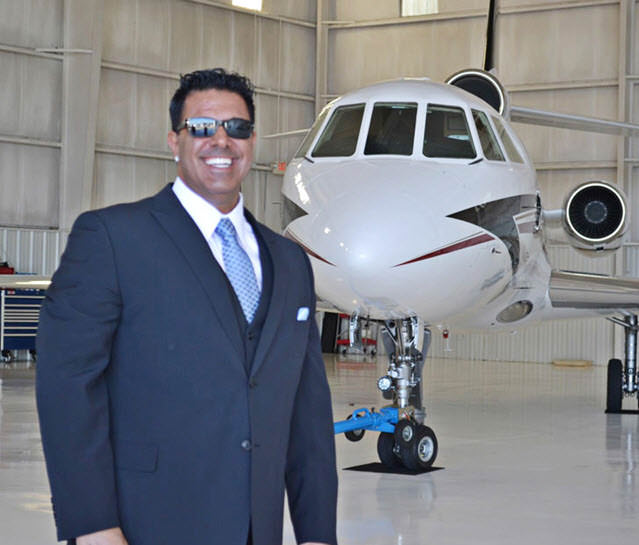
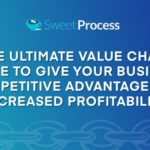
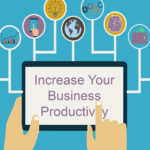
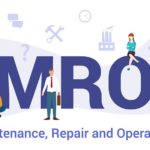
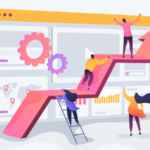




Leave a Reply